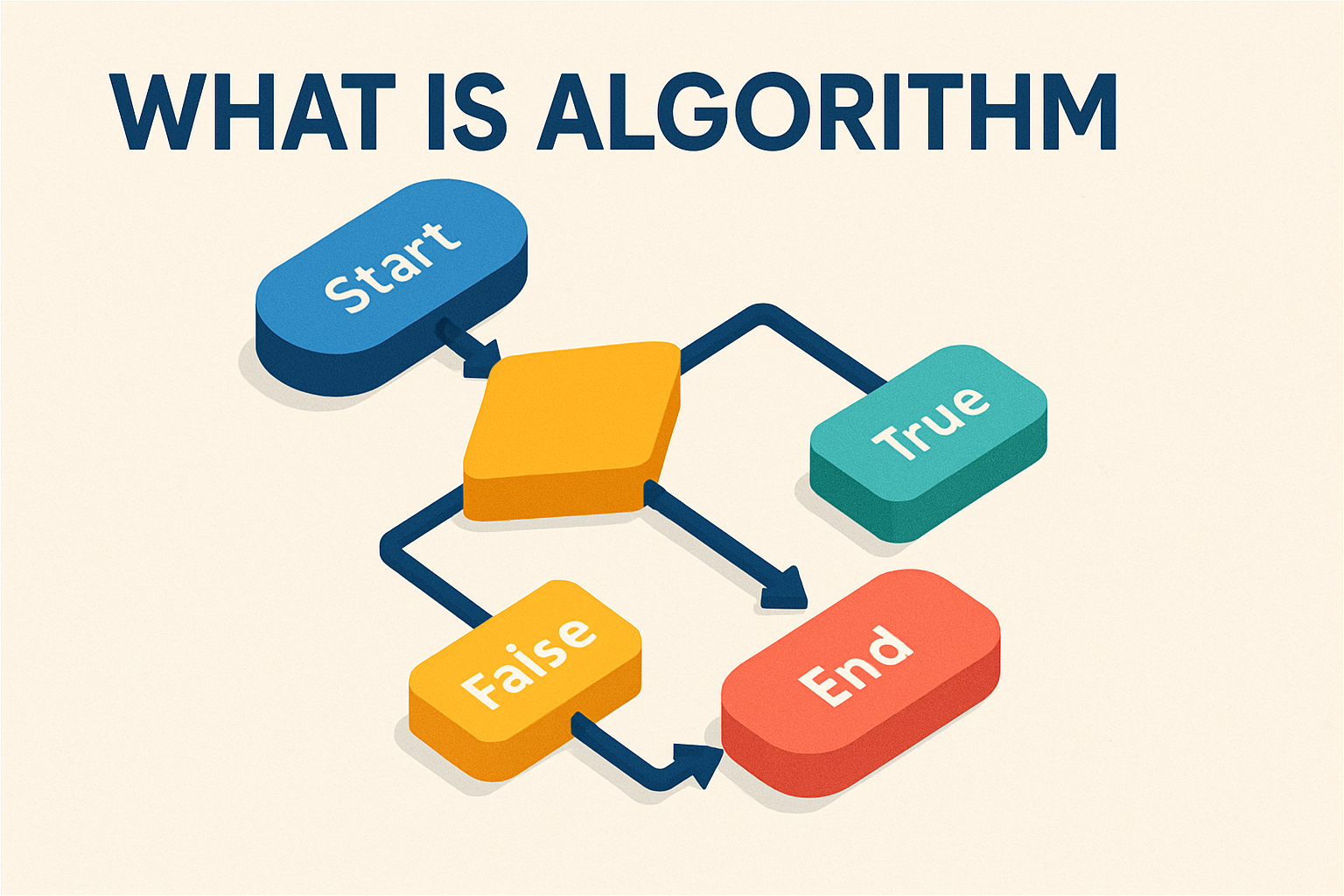What is Algorithm? A Complete Guide for Cybersecurity and Business Leaders
Updated on August 22, 2025, by Xcitium

Have you ever wondered how Google ranks websites, Netflix recommends shows, or cybersecurity systems detect threats in real-time? The answer lies in a single concept—algorithms.
So, what is algorithm? At its core, an algorithm is a step-by-step set of instructions designed to solve a problem or perform a task. From social media feeds to enterprise cybersecurity, algorithms silently power the systems we rely on every day.
For IT managers, cybersecurity experts, and CEOs, understanding algorithms is no longer optional. They determine how businesses secure data, analyze threats, and optimize operations. This article provides a deep dive into algorithms, their types, real-world applications, and importance in cybersecurity.
What is an Algorithm?
An algorithm is a finite sequence of well-defined steps that process input data to produce a desired output. Think of it as a recipe in cooking—a list of instructions that, when followed, lead to a specific result.
Key Characteristics of Algorithms:
- Clarity: Each step is precise and unambiguous.
- Finiteness: The process must end after a certain number of steps.
- Input & Output: Algorithms require input and deliver an output.
- Effectiveness: Each step must be achievable using available resources.
✅ In business and cybersecurity, algorithms form the foundation of automation, threat detection, encryption, and decision-making systems.
Types of Algorithms
Understanding the different types of algorithms helps leaders choose the right ones for their goals.
1. Sorting Algorithms
- Organize data in a specific order.
- Examples: Bubble Sort, QuickSort, Merge Sort.
- Use Case: Database management, arranging security logs.
2. Searching Algorithms
- Find specific data within a dataset.
- Examples: Binary Search, Linear Search.
- Use Case: Identifying user records or detecting anomalies.
3. Encryption Algorithms
- Protect sensitive data by transforming it into unreadable formats.
- Examples: AES, RSA, SHA-256.
- Use Case: Cybersecurity, secure communications, financial transactions.
4. Machine Learning Algorithms
- Learn from data to make predictions.
- Examples: Decision Trees, Neural Networks, Random Forests.
- Use Case: Fraud detection, malware identification, predictive analytics.
5. Graph Algorithms
- Model relationships between entities.
- Examples: Dijkstra’s Algorithm, PageRank.
- Use Case: Social network analysis, route optimization, supply chain efficiency.
What is Algorithm in Cybersecurity?
In cybersecurity, algorithms are the core engines behind data protection, threat detection, and access control.
Common Cybersecurity Algorithms:
- Hashing Algorithms (e.g., SHA-256): Secure password storage and integrity checks.
- Encryption Algorithms (e.g., AES, RSA): Protect data at rest and in transit.
- Authentication Algorithms: Verify user identity and prevent unauthorized access.
- Anomaly Detection Algorithms: Identify unusual behavior indicating insider threats.
✅ Without algorithms, security systems would fail to process the enormous data volumes needed for real-time protection.
Real-World Applications of Algorithms
Algorithms aren’t just technical concepts—they shape business strategies and cybersecurity defense.
Business Applications:
- Decision-Making: Predictive analytics for business growth.
- Automation: Streamlining repetitive tasks.
- Customer Experience: Personalization in apps and services.
Cybersecurity Applications:
- Malware Detection: AI-powered algorithms spot suspicious code.
- Intrusion Detection Systems (IDS): Algorithms detect unusual traffic patterns.
- Access Management: Algorithms enforce Zero Trust principles.
- Incident Response: Automated algorithms triage threats faster than human teams.
Benefits of Algorithms in Business and Security
Why should leaders care about algorithms? Because they:
- Enhance Efficiency: Automate repetitive and complex tasks.
- Improve Accuracy: Reduce human error in analysis and decision-making.
- Boost Security: Provide strong encryption and anomaly detection.
- Enable Scalability: Handle vast amounts of data in real-time.
- Support Compliance: Ensure data protection policies are consistently enforced.
Challenges of Algorithms
While powerful, algorithms also come with risks.
- Bias and Fairness Issues: Poorly designed algorithms may favor some outcomes.
- Complexity: Advanced algorithms can be hard to audit and explain.
- Security Risks: Weak encryption algorithms can be exploited.
- Dependency: Overreliance can reduce human oversight.
For IT managers and CEOs, balancing automation with governance is crucial.
The Role of Algorithms in AI and Machine Learning
Modern cybersecurity heavily relies on machine learning algorithms. These systems analyze millions of events per second to detect patterns, anomalies, and threats.
Examples:
- Spam Filters: Use Bayesian algorithms to classify emails.
- Fraud Detection: Machine learning algorithms flag suspicious financial transactions.
- Endpoint Security: Algorithms monitor device behavior to stop zero-day attacks.
✅ The future of cybersecurity is algorithm-driven AI defense systems.
Best Practices for Using Algorithms in Cybersecurity
For executives and IT leaders, here’s how to ensure algorithms strengthen—not weaken—your defenses.
- Use Proven Encryption Standards
- Stick with AES, RSA, or SHA-2 family algorithms.
- Implement Machine Learning Wisely
- Train models on diverse datasets to reduce bias.
- Adopt a Zero Trust Framework
- Use algorithms to continuously verify users and devices.
- Audit Algorithms Regularly
- Review logic, performance, and compliance with regulations.
- Balance Automation with Human Oversight
- Pair algorithmic insights with human decision-making.
Future of Algorithms in Cybersecurity
As cyber threats grow more advanced, algorithms will evolve.
- Quantum-Safe Algorithms: Preparing for quantum computing risks.
- AI-Augmented Threat Hunting: Autonomous algorithms detecting threats proactively.
- Behavioral Algorithms: Predicting attacks based on user activity patterns.
- Self-Healing Systems: Algorithms that detect, fix, and adapt without human intervention.
✅ The next generation of algorithms will combine AI, machine learning, and cryptography for unprecedented resilience.
Frequently Asked Questions (FAQ)
Q1: What is algorithm in simple words?
It’s a step-by-step set of instructions that solves a problem or performs a task.
Q2: What are examples of algorithms in daily life?
Google search ranking, GPS navigation, Netflix recommendations, and email spam filters.
Q3: What is algorithm in cybersecurity?
Algorithms secure data (encryption), verify identities (authentication), and detect threats (anomaly detection).
Q4: Are all algorithms based on AI?
No. Some are simple rules (like sorting), while others use advanced machine learning.
Q5: Why should CEOs understand algorithms?
Because algorithms drive business efficiency, cybersecurity resilience, and digital competitiveness.
Conclusion: Why Leaders Must Understand Algorithms
So, what is algorithm? It’s more than just code—it’s the engine of modern technology. From protecting sensitive data to guiding billion-dollar business decisions, algorithms influence nearly every aspect of digital life.
For IT managers and executives, understanding algorithms is about strategy and resilience. The right algorithms can strengthen cybersecurity, streamline operations, and provide a competitive edge in today’s digital-first world.
👉 Want to explore enterprise-grade cybersecurity powered by intelligent algorithms? Request a demo with Xcitium today and discover how to safeguard your business against evolving threats.
















